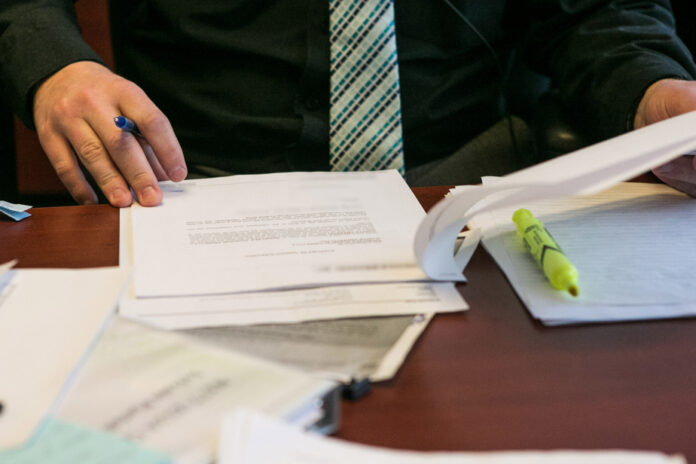Despite a context where Canadians’ debt is increasing due to rising prices and interest rates, experts note that many people are ignoring the insolvency process, even though it could help those in desperate situations. to start from scratch.
The growing pressure is reflected in consumer insolvency figures, which rose significantly in the second quarter, according to the Office of the Superintendent of Bankruptcy. Meanwhile, the Canadian Association of Insolvency and Restructuring Professionals (CAIRP) indicated in August that it expected consumer insolvencies to surpass pre-pandemic averages later this year .
“It’s absolutely a perfect storm,” observes Scott Terrio, director of consumer insolvency at licensed insolvency trustee firm Hoyes, Michalos
He fears that more Canadians will find themselves on the brink and not knowing where to turn.
In the second quarter of 2023, total credit card balances reached an all-time high of $107.4 billion, according to Equifax Canada. Total consumer debt has reached 2.4 trillion.
While more Canadians likely need help resolving their debts, Terrio and other experts say there are misunderstandings about the bankruptcy process.
In bankruptcy, a person is released from all or part of their debts as part of a legal settlement, explains Sandra Fry, credit counselor at the Credit Counseling Society. If her monthly income is below a certain threshold, bankruptcy is a nine-month process and the only costs are legal fees, she explains.
The threshold is set annually by the Office of the Superintendent of Bankruptcy. For 2023, it ranges from $2,543 to $6,729 depending on family size.
If the debtor’s income exceeds this threshold, or exceeds it during the bankruptcy process, they must repay part of their debt over 21 months, Fry says.
Whether the process lasts 9 or 21 months, once it is completed, the debtor is free of their debts. The bankruptcy will appear on their credit history for six or seven years after their discharge, depending on the province they live in, explains the Financial Consumer Agency of Canada. If this is not a first bankruptcy, it will remain on the credit history for 14 years.
A bankruptcy will also impact an individual’s credit rating and appear on the Court of King’s Bench register, which can have a negative effect on certain professions and in areas such as immigration sponsorship, adds Mrs. Fry.
But bankruptcy is not the only option, recalls Mr. Terrio.
“We actually don’t have a lot of bankruptcies. 90% of our files are consumer proposals, which is a legal alternative to bankruptcy,” he explains.
Under a consumer proposal, more of the debt is repaid than in bankruptcy, Fry says, typically over five years.
According to the Financial Consumer Agency of Canada, a consumer proposal appears on a credit history three years after debts have been repaid, or six years after signing the application, whichever comes first.
It also has a negative impact on a credit score, but less than bankruptcy, Fry says.
In a consumer proposal, creditors must be offered more than they would have received if a bankruptcy had occurred, Terrio says – usually between 20% and 30% of the debt.
“(Creditors) wait longer, but it’s also a good deal for them. Because if they refuse the proposal and we go bankrupt, they receive less. »
One of the main differences between a bankruptcy and a consumer proposal is that the latter does not affect assets, underlines André Bolduc, president of the CAIRP and licensed insolvency trustee.
But many wrongly believe that if they choose bankruptcy, they will lose all their assets, which is false, he adds.
When it comes to a house, for example, it depends on the equity that is tied up in it. If there is none, or if the net worth is below a certain exemption threshold which varies according to the provinces, it is possible to file for bankruptcy while keeping your house and continuing to pay the mortgage, explains Mr. Bolduc. If not, it’s probably best to go with a proposal, he adds.
There are also exemptions for other assets, such as vehicles and registered savings plans, says Mr. Bolduc. These exemptions also vary by province.
Many people may not realize they are on the precipice because they are paying the minimum on a large debt and maintaining a good credit score, Terrio says. But all it takes is one major change, like a layoff, for the house of cards to collapse. That’s why it’s important to figure out what your “worst case scenario” looks like, he believes.
“You’d be surprised what people realize when they put this down on paper. »
When it’s time to evaluate your options, only licensed insolvency trustees can accompany someone through bankruptcy or consumer proposal proceedings, explains Mr. Bolduc. They can also use other options outside the insolvency process and refer someone to a credit counseling agency, he adds.
However, you can also start with a nonprofit credit counseling organization to evaluate your options, says Fry. If a bankruptcy or proposal is the best solution, then they can recommend a licensed insolvency trustee, she says.
Credit counselors can also help negotiate with individual creditors to try to lower interest rates, Fry says.
This will not be legally binding and will impact credit score and ability to obtain new credit. But this will not be made public and the organization will also require that the debtor participate in a financial education course, she continues.
One of the biggest pitfalls Bolduc sees is that people don’t seek help about their debt early enough, often because they’re ashamed. His message to these people is that they have not failed, and they are not alone.
“The comment I get the most from people I meet is […] “I should have come to you sooner, and it wasn’t as bad as I thought.” »















